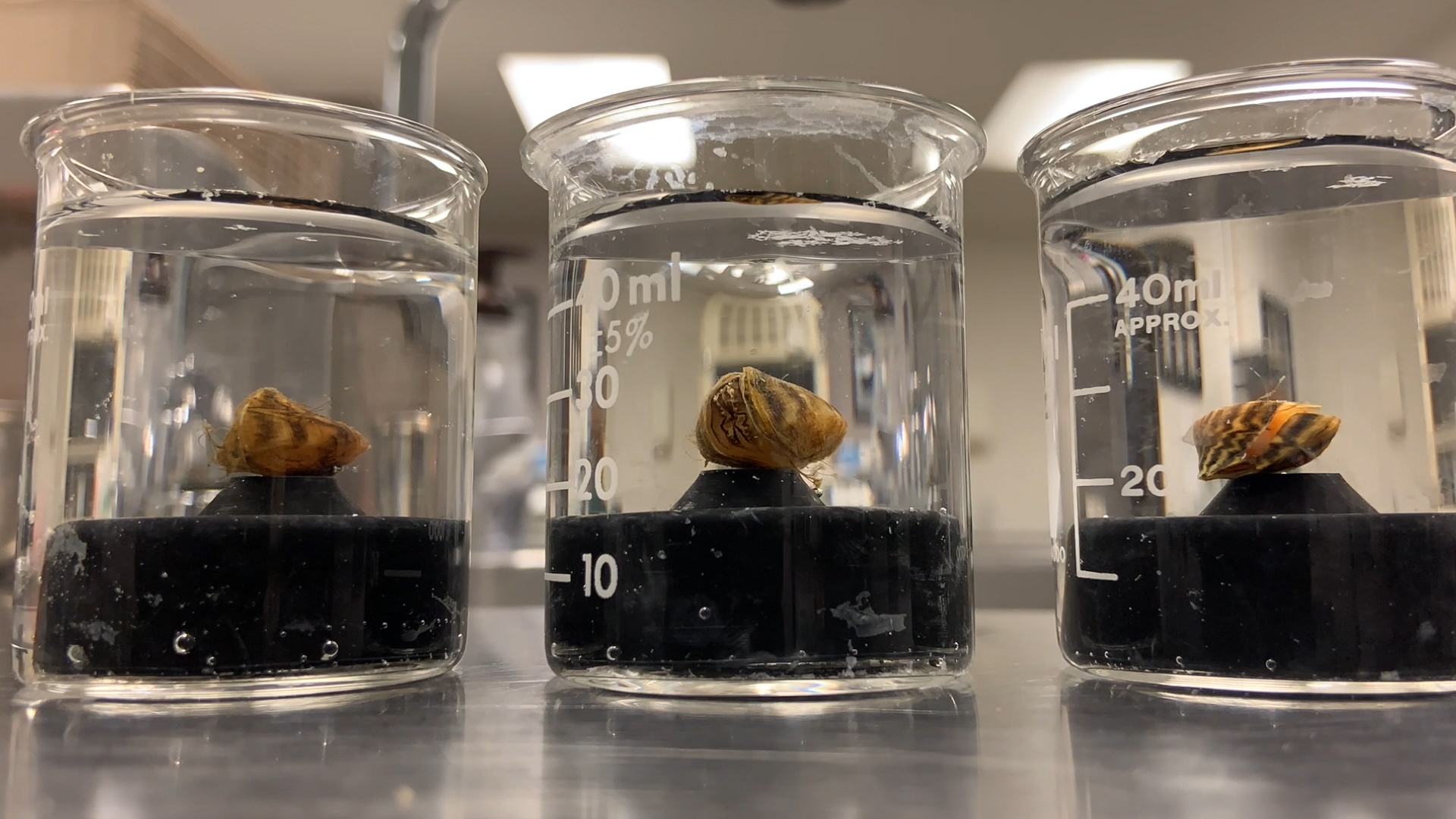
This project will develop methods of RNA-interference (RNAi) to identify genetic weak points in zebra mussels and to develop the tools to manipulate these critical genes as a stepping-stone towards targeted genetic biocontrol efforts. First, researchers will create the molecular biology reagents and methods for knocking down dozens of target genes. Then, researchers will deliver these reagents to live mussels, cultured in the laboratory, and test for a range of molecular and phenotypic effects.
With RNAi technology, the genome of the target species is not altered and in most cases, RNAi effects are not passed to offspring. Instead of mutating an organism’s DNA, RNAi works by blocking the expression of genes controlling important biological processes, leading to fitness effects and suppressed population growth of the invasive species. Finally, RNAi-based biocontrol is particularly well suited for zebra mussels since it does not require long-term propagation of the modified mussels. Instead, RNAi reagents are delivered to mussels by feeding them microbes expressing the interfering RNA, which the mussels filter out of the water.
The groundwork for research on RNAi for biocontrol includes the sequencing and assembling the 16 chromosomes of the zebra mussel genome. This genomic map allowed us identify a long list of target genes involved in critical processes. This is the first step in any genetic biocontrol technology, because the DNA sequence of a target gene must be known so that RNAi reagents can be designed to recognize that gene. The zebra mussel target genes the project is targeting are involved in processes that are critical for growth and invasive spread—for example, genes controlling growth and calcification of shells, genes that build the “byssal threads” that mussels use to attach to boats or to vegetation on the bottom of lakes, and genes that protect cells from damage under heat stress that occurs every summer in Minnesota. The project also identified genes whose knockdown is likely to lead to high mortality, such as genes that control function of the nervous system. RNAi approaches have been applied in many other animals (including other oysters or mussels), however, this work represents the first application of this technique in zebra mussels.
Progress
This project aims to test whether RNA interference (RNAi) can be used to manipulate the expression of genes in zebra mussels through the delivery of double-stranded interfering RNA (dsRNA) produced by bacteria or algae which are fed to zebra mussels. In the first half of 2021, researchers identified initial target genes spanning a range of crucial biological processes and made bacterial dsRNA expression constructs. Over the past six months, the team has been working with zebra mussels in the MAISRC containment laboratory to establish functional assays for filtration, growth, and attachment that will allow them to measure the effects of exposure to the RNAi constructs. They have also been developing assays to verify the expression of the dsRNA constructs in bacteria. They have conducted preliminary tests where zebra mussels were exposed to dsRNA-expressing bacteria and scored for filtration and attachment. Initial results indicate that constructs targeting the translational regulator (CPEB4) and a byssal thread protein (Dpfp1) are able to disrupt surface attachment (to varying degrees). Future work will focus on verifying target gene knock-down by RT-qPCR, refining and establishing additional phenotypic assays, optimizing dosing and delivery strategies, and identifying and testing additional RNAi targets.
